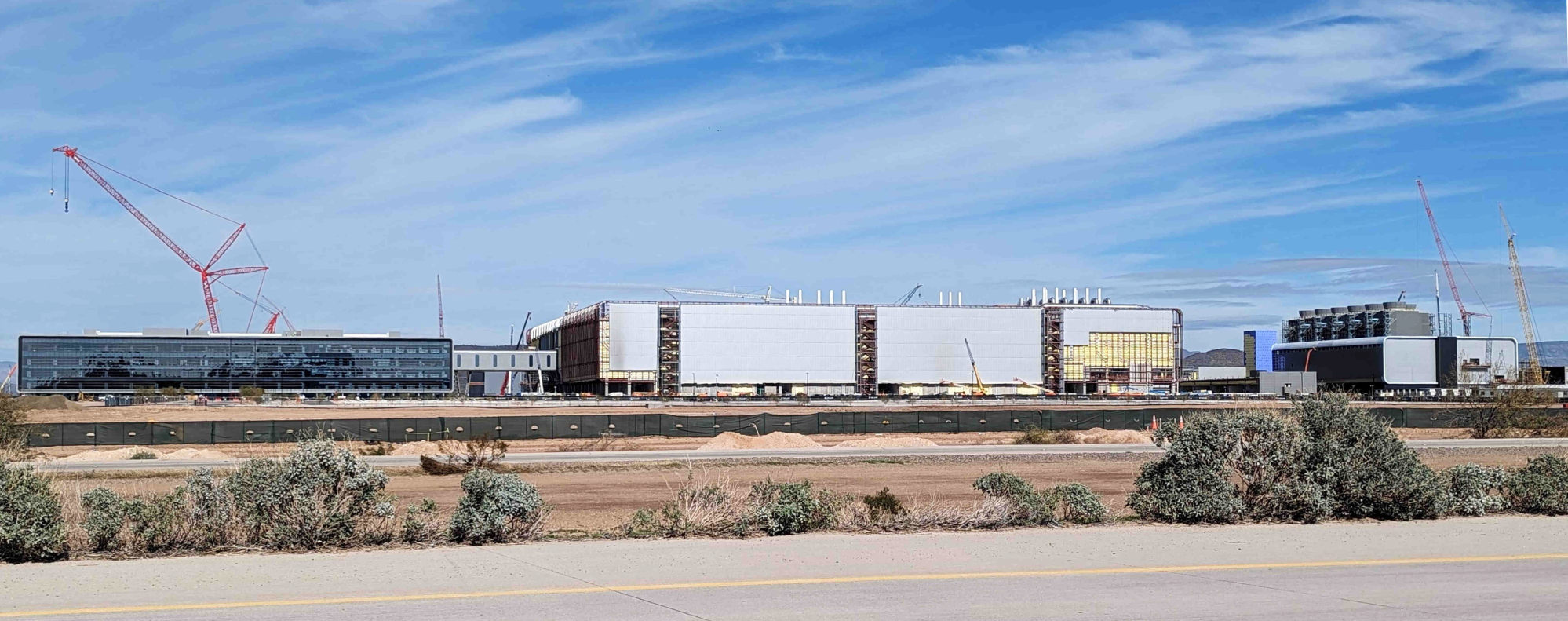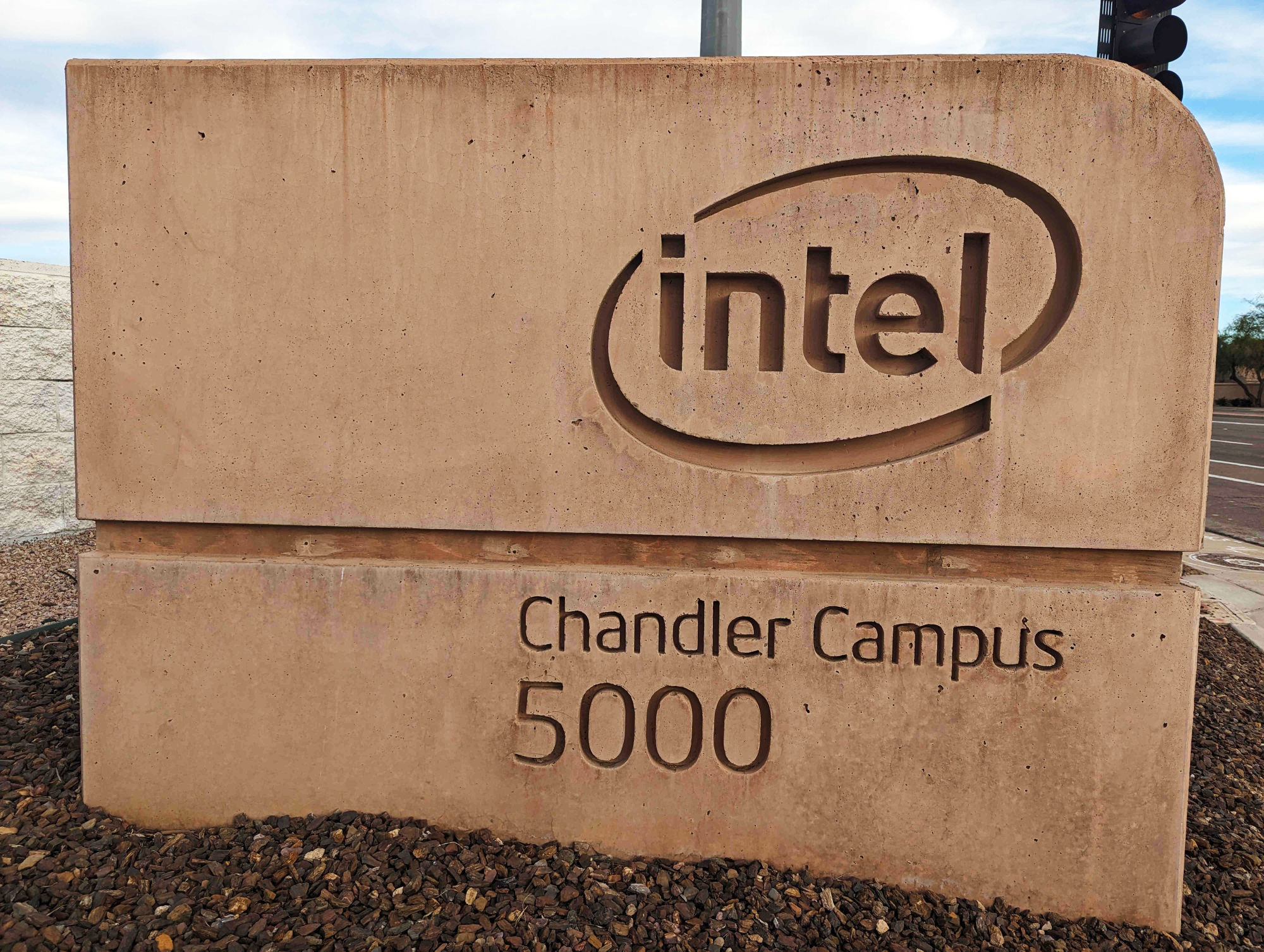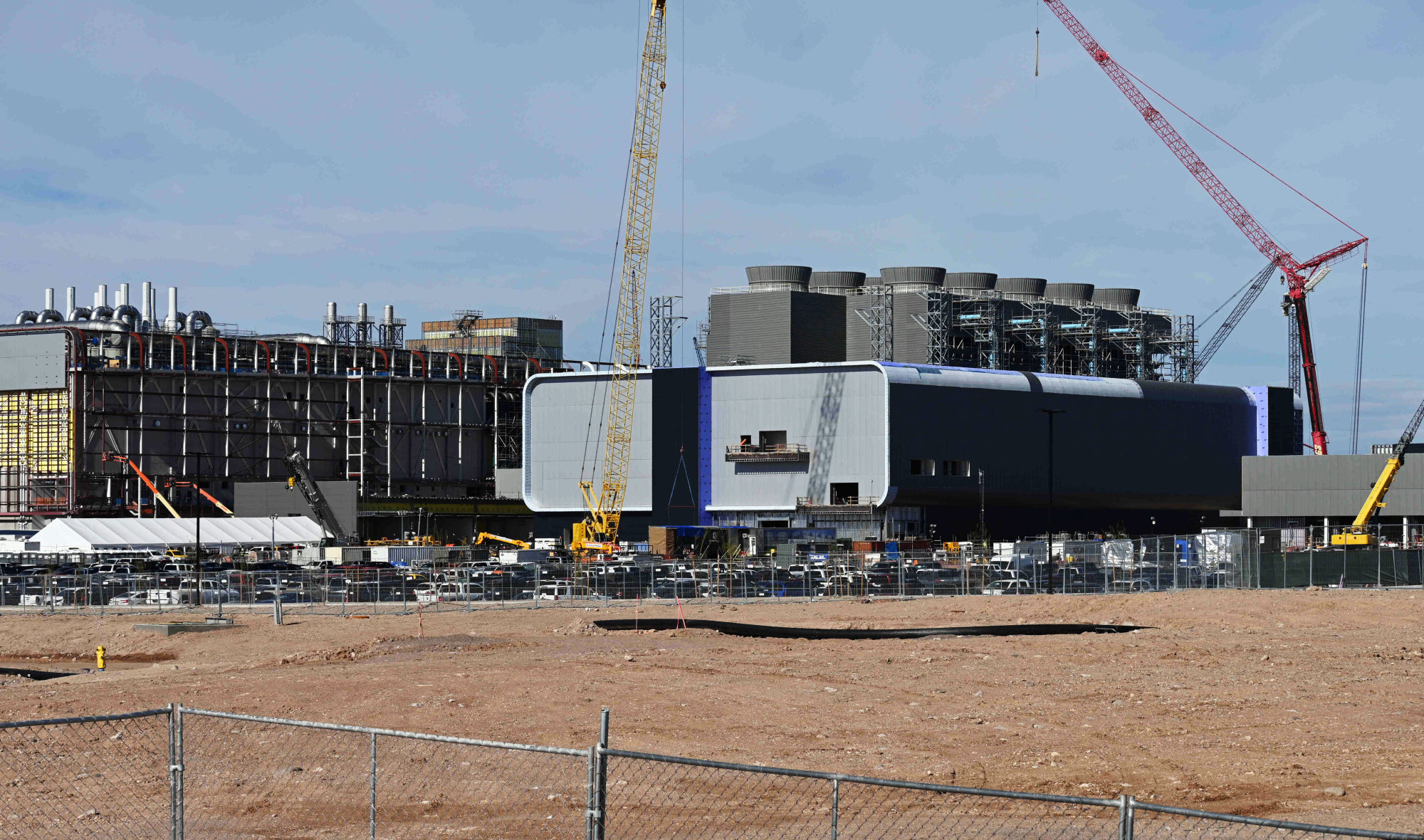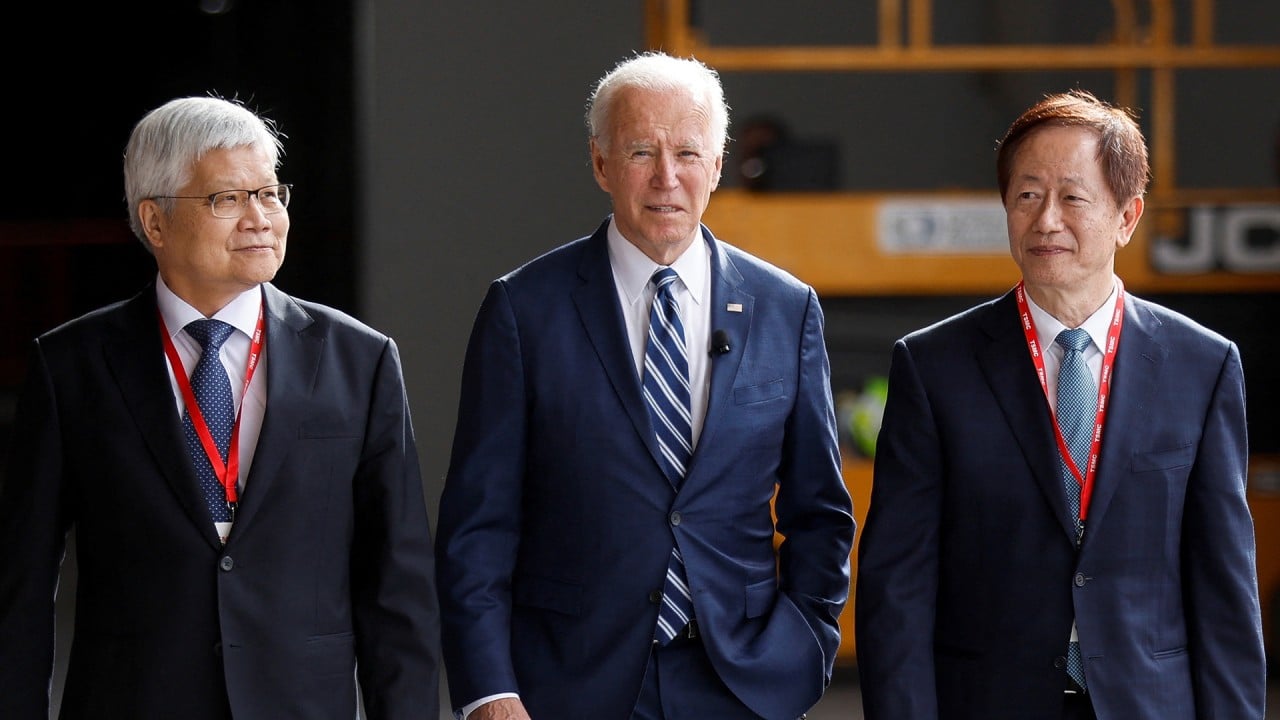
TSMC’s US plant the result of industrial policy meant to counter China, giving states like Arizona more economic heft
- Arizona’s strength in semiconductors helped it court TSMC, but the deal could not have happened without the implicit promise of federal spending
- The state has been ramping up educational pipelines to supply TSMC with everything from entry-level technicians to semiconductor engineers
This is the first of a two-part series looking at how Arizona was chosen as the US state to host the latest semiconductor wafer fabrication plant from TSMC, the world’s leading chip foundry, in a move that is redefining geopolitical boundaries in the global chip industry.
Years later, under pressure from the administration of then-president Donald Trump to open a facility in the US, Foxconn finally agreed to build a new display panel plant – in Wisconsin. Foxconn’s plans for the state included a 315-acre parcel of land that was supposed to house a facility that would create thousands of new jobs, but it never materialised. Microsoft recently agreed to buy the land for US$50 million.
In hindsight, Arizona may have dodged a bullet. But TSMC always made more sense for the state, which has a robust semiconductor industry in the desert. Arizona has thus become one of the biggest beneficiaries of resurgent place-based industrial policy in the US, which seeks to leverage specific industrial strengths in certain localities, as the country seeks to counter the technological rise of China, where industrial policy has long been a staple of central government planning.
“Left to their own devices, the companies are going to gravitate to places where there’s already significant presence. That is an advantage that Arizona has,” said Mark Muro, a senior fellow at Brookings Institution who studies place-based industrial policy. “As a sunbelt, new place, it’s one of the most established in semiconductors.”

Ultimately, Arizona could not have landed the TSMC deal for an advanced wafer fabrication facility, or fab, without the implicit guarantee that federal money was forthcoming, with most of the US$53 billion in Chips Act money going toward incentivising domestic semiconductor manufacturing. This spending makes up most of the US$77 billion of place-based industrial policy spending, passed by Congress from January 2021 to January 2023, and identified by Brookings researchers, including Muro.
This represents a shift from what Muro referred to as Washington’s “eclectic, sometimes very disparate innovation strategies” in past decades to a more muscular industrial policy that is looking inland for new regions of growth.
“It likely will not invest heavily in coastal places that are already doing very well in the United States, but will often seek these interior places that have the beginnings of important technology concentrations, but need to grow,” Muro said.
Chris Camacho, president and CEO of the Greater Phoenix Economic Council (GPEC), acknowledged that federal spending was critical to getting the new TSMC fabrication plant.
“The previous (US) administration and the current administration both played roles in this process, because it was a multi-year effort,” Camacho told the South China Morning Post in January. “A part of the discussion to get them to come to the United States was ensuring that the Chips Act would move forward.”
The Chips Act explicitly supports “regional economic development”, with a focus on places with the ability to “address the intersection of emerging technologies”.
In mid-May, the Biden administration announced a new initiative to bolster five “workforce hubs”, of which Phoenix is one. The other cities are Columbus, Ohio; Baltimore, Maryland; Augusta, Georgia; and Pittsburgh, Pennsylvania. The goal, according to the administration, is to create models “to replicate with partners across the country”.
Phoenix and Columbus were specifically named for their strengths in semiconductors, but Arizona has so far remained a much more attractive region for such investment, despite certain environmental constraints like an ongoing water shortage that recently forced the state to put limits on new development.
Out of 41 private investment deals concerning semiconductors during Biden’s presidency, 10 have been in Arizona, according to data released by the White House – more than in any other state.
Arizona’s strength in semiconductors comes from lessons learned over decades of catering to Intel, which has been in the state since 1979, and several other large chip firms. So the state already had programmes in place that it could replicate to fit TSMC’s needs.
Intel is currently in the process of building another wafer fab in Arizona and a new one in Ohio.
“[There is] a pretty advanced region around Columbus, but it’s not like there’s another large-scale fab right there,” Muro said. “It’s not like Intel can just repeat the process the way it can in Arizona.”
To land the TSMC deal, Arizona adapted education and training pipelines to convince the company it would have the workers it needs, and the chip maker will be using techniques for recycling water – a critical component of any fabrication facility – that Intel has employed for years.

The Phoenix municipal government is spending up to US$205 million on infrastructure for roads, water and sewage around the 1,100 acres that will soon house TSMC’s most advanced fab outside Taiwan. TSMC currently operates a smaller 8-inch fab in Washington state.
“We met every one of their demands, or their needs, and I would argue we built an authentic trust with TSMC and their management team,” Camacho said. “Throughout that multi-year process, we were working on their behalf to ensure that they were successful, and we’re still doing that.”
Labour has long been highlighted as the major hurdle for bringing chip manufacturing back to the US. The combination of high labour costs and a shortage of skilled personnel makes production in Asia much more economical.
The state has also been building up the pipeline at the community college level, something Intel was already drawing from. A new programme for Maricopa Community Colleges aims to deliver entry-level workers to TSMC quickly by giving people the basic skills they need to get started and then learn the rest on the job.
“We had to drill down and really get to the essential competencies that will make this person capable of knocking on the door, meeting the job roles, and getting a well-paying job with very short-term turnaround and an intervention,” said Leah Palmer, executive director of the Arizona Advanced Manufacturing Institute, who helped designed the programme.
The programme includes virtual and augmented reality training to help people learn what it means to work in a wafer fabrication plant before moving forward. “Most people do not have a clue at what happens in a fab,” Palmer said.
As part of an on-ramp, the programme has a landing page where applicants can take a quiz to assess their existing level of knowledge and see what kinds of things they will have to learn to work at a company like TSMC.
Within six months, 2,600 people had gone to the website and 2,300 passed the test, according to Palmer. From June 2022 to May 2023, 578 students received semiconductor-related certifications, out of the 684 students who took those classes.
The goal is to have a large combined talent pool from which TSMC can draw for its new plant, which is expected to eventually employ about 4,500 people. Some of those will come from Taiwan, like the initial 300 contingent that flew into Phoenix last year.
“Many of the job roles that TSMC had and needed now were the ones that they were trying to train in Taiwan. We have some of those people, but we certainly didn’t have it at scale,” Palmer said. “And so what we are now doing is working to have a targeted semiconductor track so that it is purposely targeted towards what this growth is looking at. Not just entry level, but next level.”
The payoff for Arizona’s efforts is the largest foreign direct investment deal in the US at an estimated US$40 billion by the end of construction. The plant is expected to start producing 7-nanometre chips next year and 3-nm chips by 2026. By comparison, Washington’s restrictions on semiconductor-related exports to China target technologies capable of producing chips at the 14-nm level or more advanced.
Since Biden took office in January 2021, TSMC has committed to making the fourth-largest private-sector investment in the US, with its expanded investment in Arizona making up US$28 billion of a total of US$462.8 billion nationwide, according to data released by the White House. TSMC’s initial US$12 billion investment was announced during Trump’s presidency.
TSMC’s Arizona plant is the largest single project, but Intel, Texas Instruments and Micron have each committed to investing more money in total in the past two years through multiple projects, with Texas Instruments’ planned US$30 billion facility in its home state being the largest investment in that time frame.
Samsung Electronics, the South Korean consumer electronics and chip maker, is also building a US$17 billion fab in Texas.

Since Arizona’s discussions with TSMC began, issues surrounding Taiwan and its critical position in the semiconductor supply chain have only become more politicised.
“This was prior to some of the national or international headlines on the China-Taiwan-US issues that are mainstream today,” Camacho said. “This was really an economic development strategy.”
Arizona has historically been a big supporter of Taiwan, which may have helped lay the groundwork for the monumental TSMC deal. Still, it is hard to imagine such a deal happening without Washington’s involvement, as “few states have the wherewithal to make these kinds of investments consistently over time”, according to Muro.
“There’s no doubt that a background context here is a new push at the federal level in the United States to support localisation of more semiconductor manufacturing, and for that to work, for that national goal to succeed, state and local execution is absolutely crucial,” he said. “And that’s where many of the specific things that TSMC needs will be delivered – or not.”


